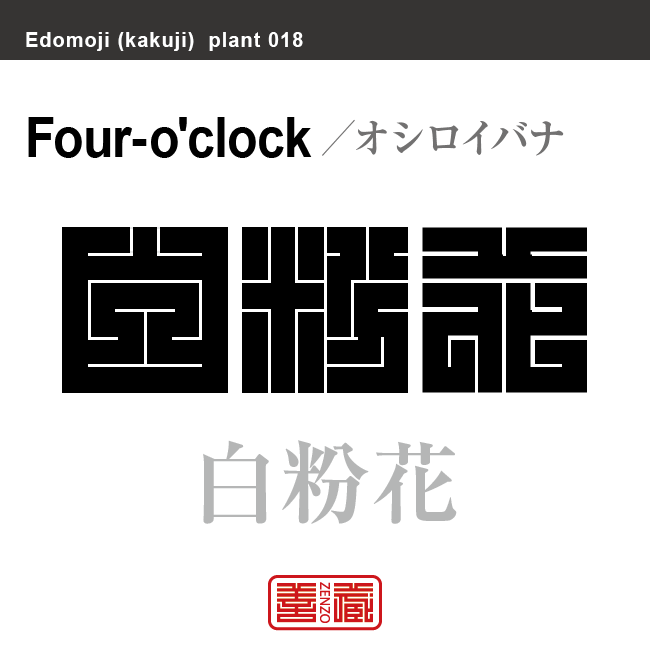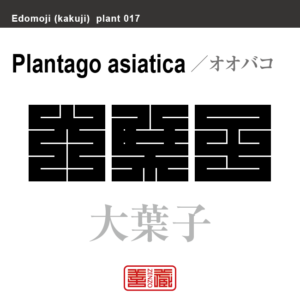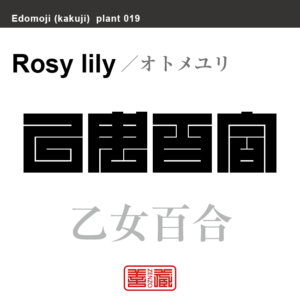白粉花 オシロイバナ 角字で花と植物の名前、漢字表記

白粉花
オシロイバナ
英語: Four-o’clock フォー オクロック
Unicode: [白_0x767D][粉_0x7C89][花_0x82B1]
オシロイバナはオシロイバナ科の多年草または一年草です。南アメリカ原産で江戸時代始めごろに渡来しました。花は芳香があり、赤、黄色、白や絞り模様が美しいため観賞用に栽培されます。タネで容易に増えるので、各地で広く野生化しています。
種子には粉状の胚乳があり、それがおしろいの粉のようなのでオシロイバナの名がつきました。
夜行性の蛾に花粉を運んでもらうため、花は夕方開きます。そのため、英語ではFour o’clock、中国語では洗澡花(風呂に入る時間から)、煮飯花(夕飯の時間から)などと呼ばれます。
根や種子に窒素化合物のトリゴネリンを含み、誤って食べると嘔吐、腹痛、下痢などを起こします。
花言葉は「臆病」「内気」「恋を疑う」です。
角字とは?
江戸時代に誕生した角字は、正方形のグリッド内にほぼ水平・垂直のラインのみで文字(漢字)が表現されるグラフィックアートです。
正方形という限られた空間の中に、あらゆる文字を閉じ込めようとするグラフィックデザインは、前述した、ミニマムな物に対する日本人特有のこだわりが随所に感じられます。
そのシンプルで有りながら、奥深い「角字」は多くの日本人を魅了し、お祭りで着る半被や印半纏(しるしばんてん)と言われる着物や、商標、印鑑、家紋、看板デザインなどに今日まで数多く使用されてきました。
What is Kakuji?
There is a style of penmanship called “Kakuji” in Japan. Edo-born Kakuji is a graphicart that expresses letters (kanji) with almost horizontal and vertical lines only.
The design which bases on many straight lines seems simple, or too plain even at its first glance; yet this beautiful artistic penmanship that encompasses the aesthetic of the Japanese in the Edo era, also known as “Iki”, and playfulness has long been inherited to this day, thanks to the masteries’ long years of efforts in training and refinement.
Kakuji with its simplicity and depth is used for designs such as trademark, hanko stamp, family crest and signboard.































































 2文字コード:MZ 3文字コード:MOZ 数字:508 ITU:258 ccTLD:.mz
2文字コード:MZ 3文字コード:MOZ 数字:508 ITU:258 ccTLD:.mz







































































































































